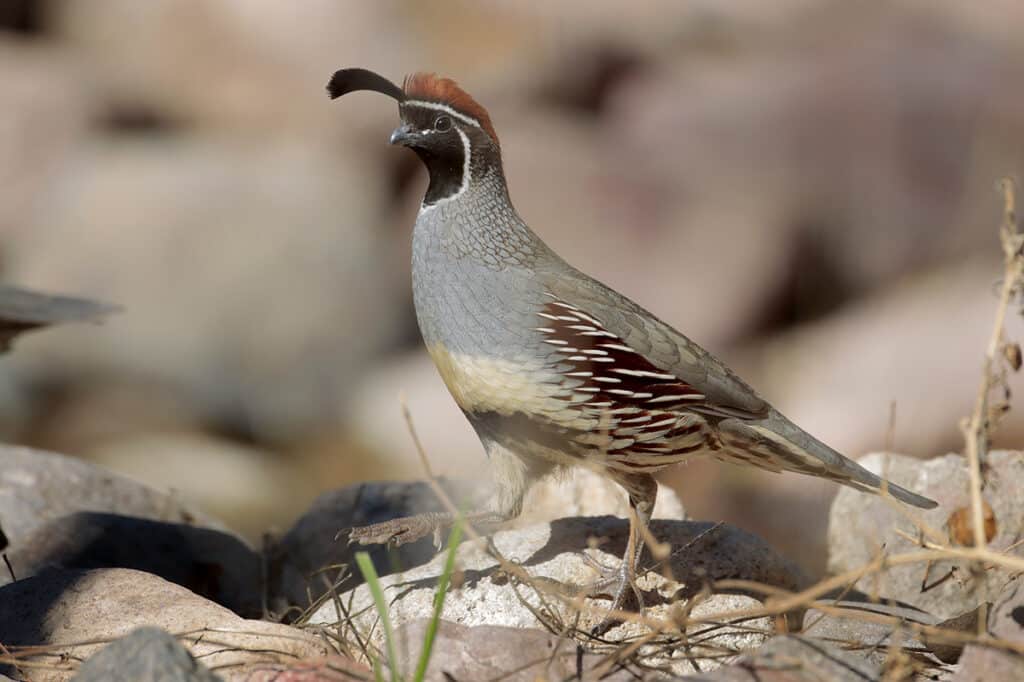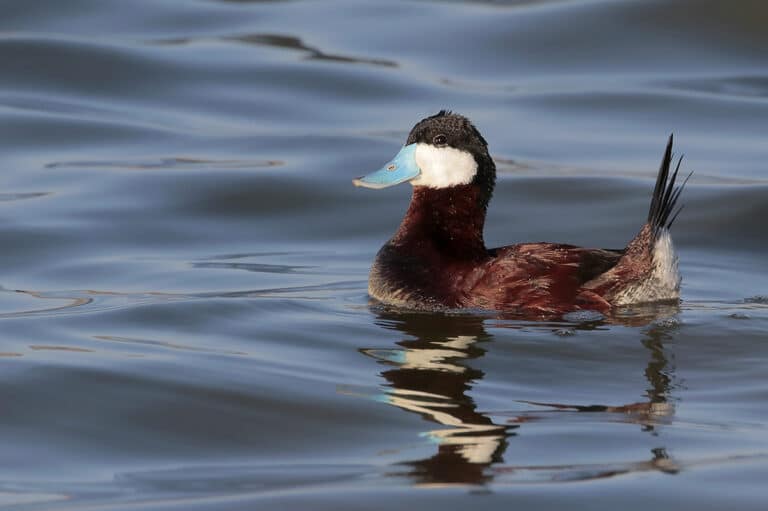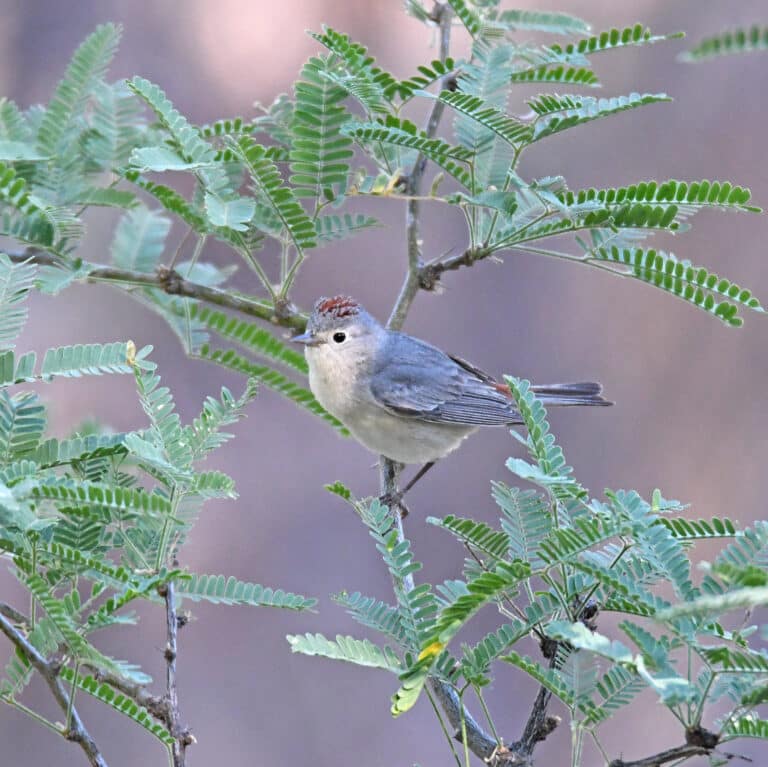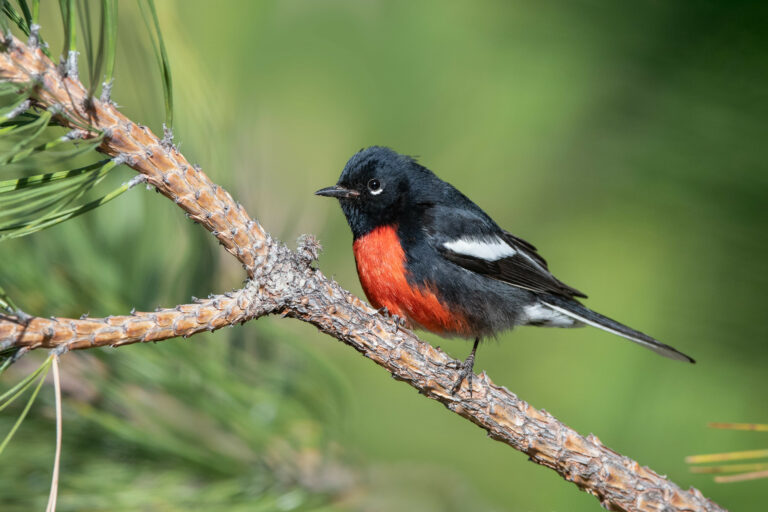I knew my landscaping work had finally paid off when I saw a small troupe of Gambel’s Quail scurrying back under the thick, prickly pear cactus of the front yard for the first time. This medium-sized quail relies on sprinting away from threats (at speeds around 20 feet per second), and hiding in dense desert scrub and cactus. More than 90% of this “boom and bust” species’ diet is composed of plant parts, so not only does it require healthy, native vegetation for safety, it needs it for reproductive success. Population levels are heavily influenced by the amounts of winter and spring rainfall—dry years yield fewer food resources and thus fewer young birds. In a good year, nine to fourteen brown spotted eggs are laid in a ground nest preferably hidden under a shrub or other protected site, and sometimes in a pot on your patio! They are precocial birds—the downy chicks are born ready to run!—with eggs synchronized to hatch together after the mother vocalizes to the chicks who “peep” to one another through their eggshells.
Gambel’s Quail is striking in appearance with a conspicuous topknot, white-bordered black face, cinnamon crown, creamy underparts, streaked chestnut-brown and white flanks, and finely scaled feathers throughout. It is non-migratory and resident in the Sonoran Desert of Arizona and Mexico, and other arid habitats of southern New Mexico, and the Colorado River drainage from Utah to California. It’s grating, four-note ka-KAA-ka-ka is a call, not a song, but is one of the most recognizable sounds of a morning in the desert.




